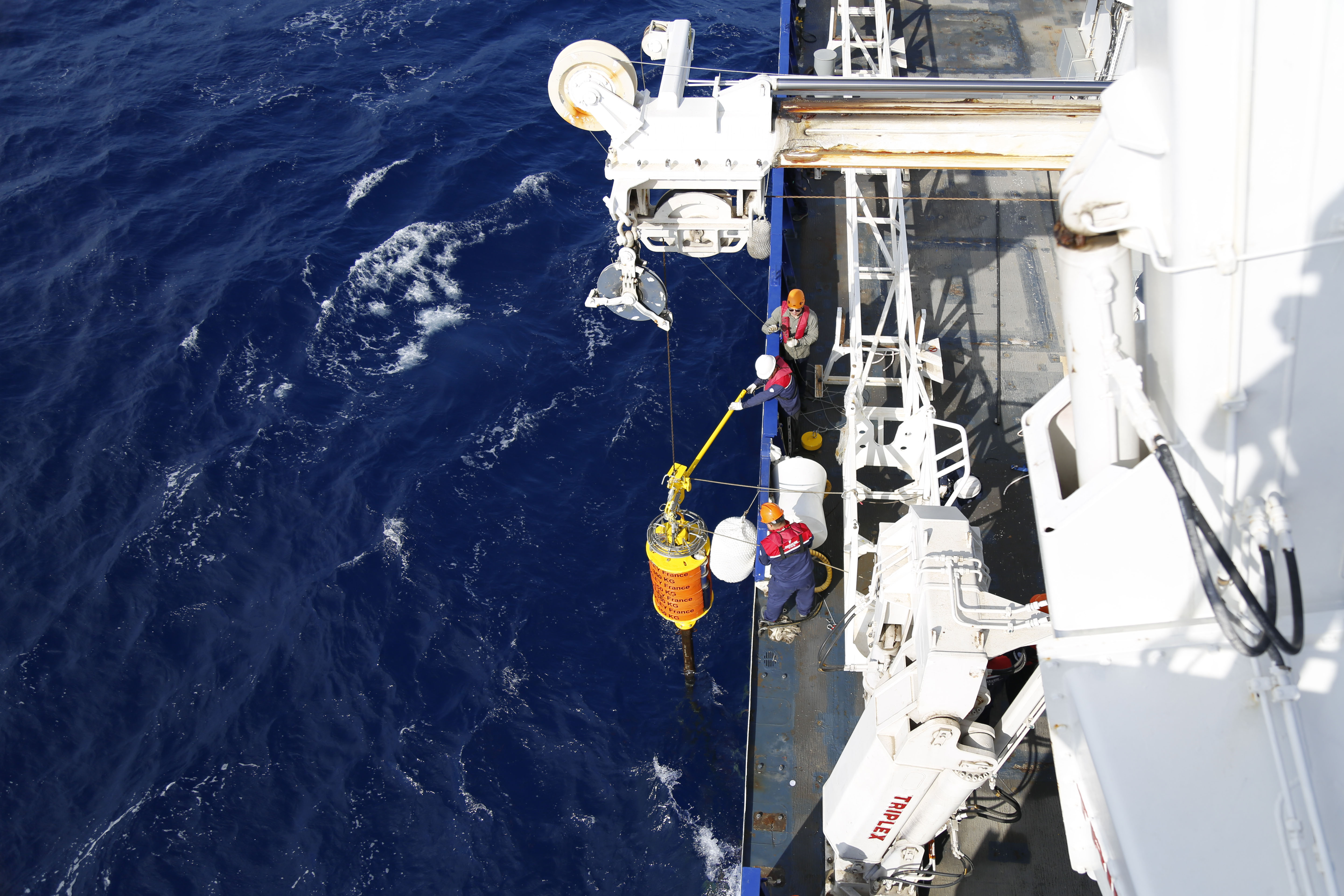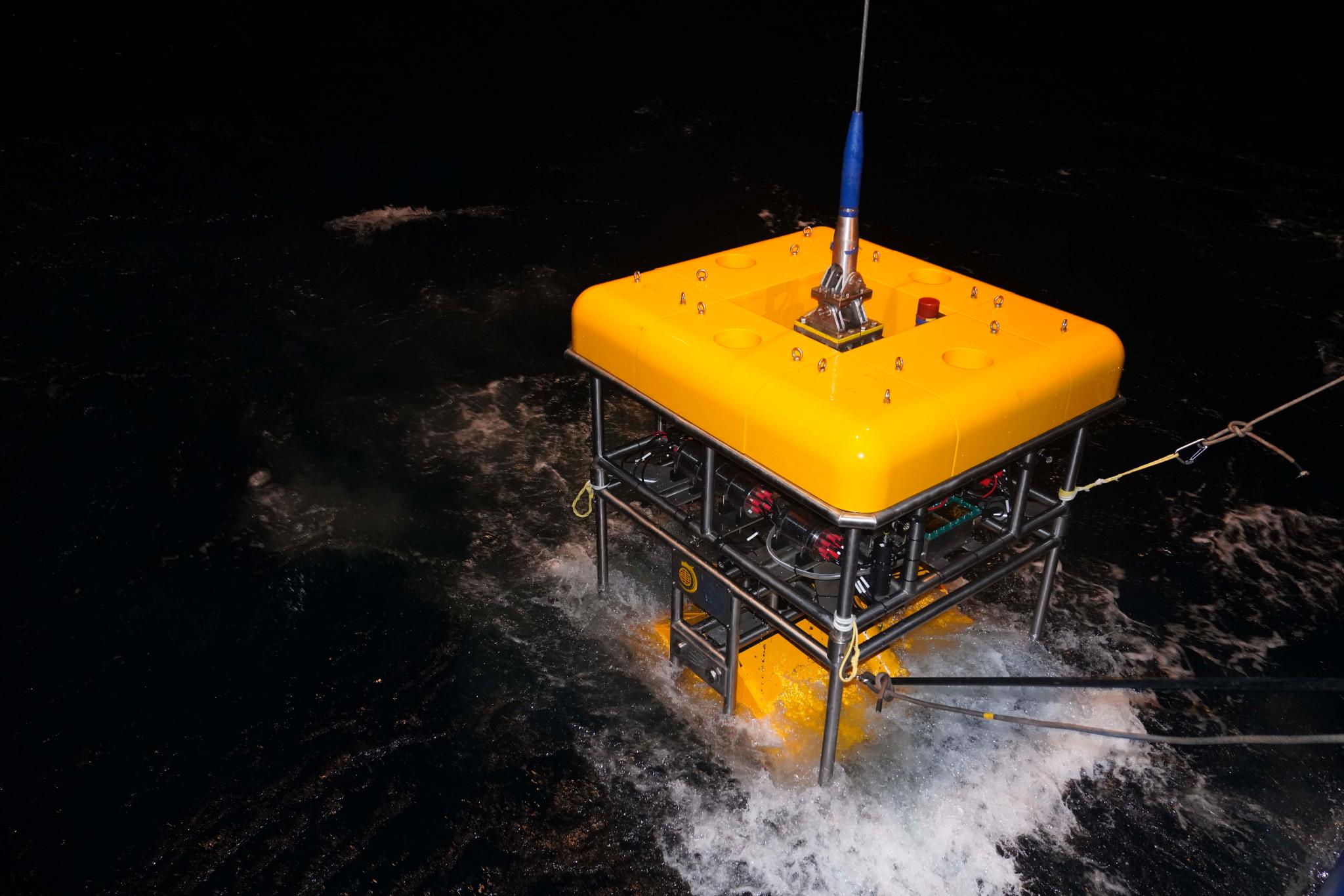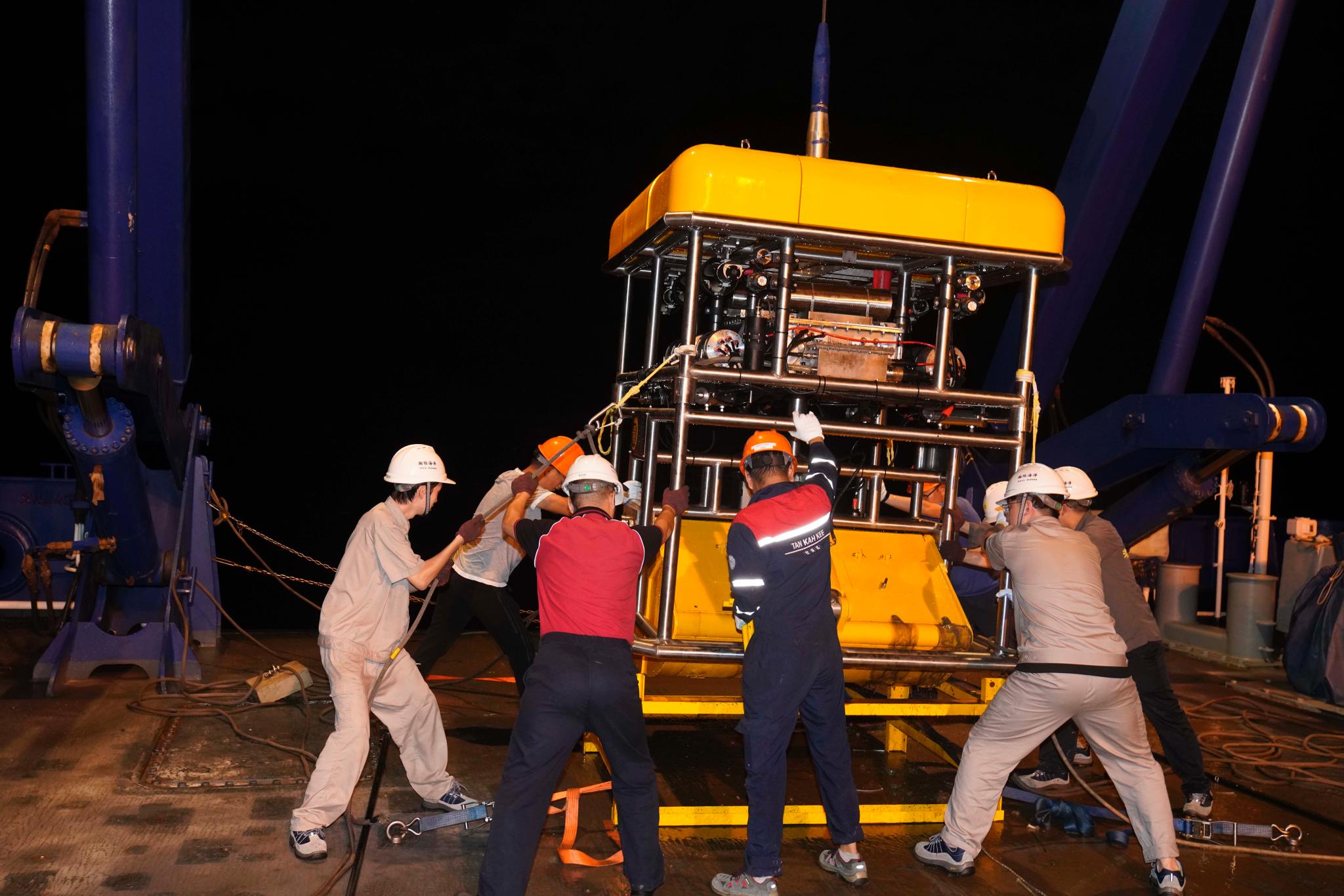After the sixth SAT of science mission equipment (KK2103) was accomplished in late October, R/V TKK sailed back to her home port—Xiamen.

A group photo of Sea Trial Team. Photo: Jiajun Huang
In retrospect the 7-day cruise, despite the challenge of a wind chill from the north, adverse sailing weather, and tight schedule for operations, the cruise participants aboard R/V TKK with the STS team as the mainstay completed the SAT of the long gravity piston corer and its launch and recovery system (LARS), as well as the deep-sea remotely operated platform.

The long gravity piston corer was deployed. Photo: Jiajun Huang
The long gravity piston corer is one of the major geological samplers. The long cradle sitting on the main deck of the ship is used to support the corer. During the operation, the corer handler, the stern auxiliary crane and the hydro boom are cooperated to insure the smooth deployment and recovery of the corer. After triggered, the corer pipe is plunged into the sediment and extract sediment samples with the help of the piston in the corer tube. The deck mounted guide roller enables the hydro boom to guide the wire for the “pull-out” of the corer pipe.
The deep-sea remotely operated platform is one of the vital tools that provide safe and effective access to deep water. Marine Operations (XMU) worked with Hangzhou Hanlu Oceanic Sci & Tech Co., Ltd. to perform the test of the platform, and concluded that the performance of the platform was stable and fine.

The deep-sea remotely operated platform was deployed. Photo: Jiajun Huang

The recovery of the deep-sea remotely operated platform. Photo: Jiajun Huang
During this cruise, thanks to advance and cautious plans, a 15-meter sediment sample was acquired at a depth of 1,539 meters using the long gravity piston corer and its LARS. The deep-sea remotely operated platform was also successfully employed to collect sediment samples at the same depth.
The successful trial of these two sets of newest equipment will further reinforce the STS’s on-board technical support, and greatly enhance the ship’s investigation capabilities in the fields of marine geology, and deep-sea environment investigations.


